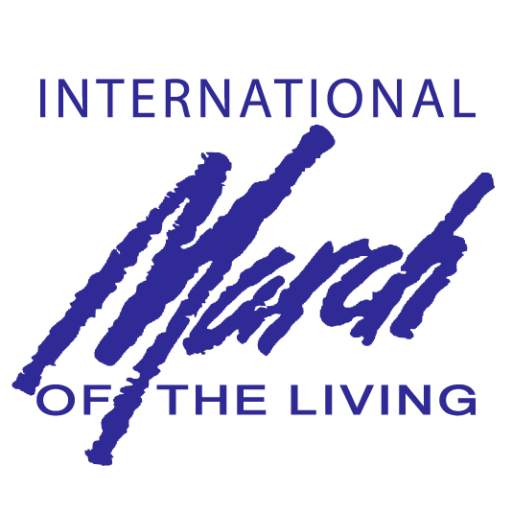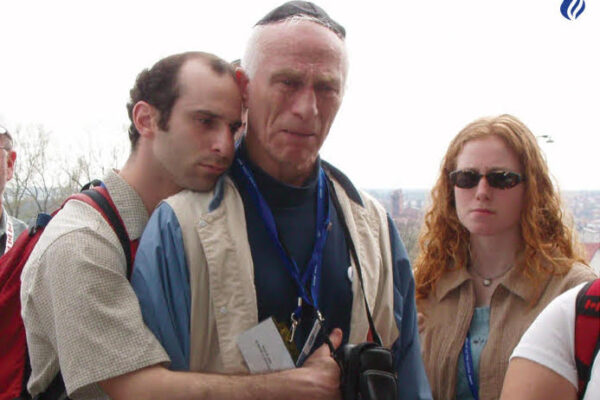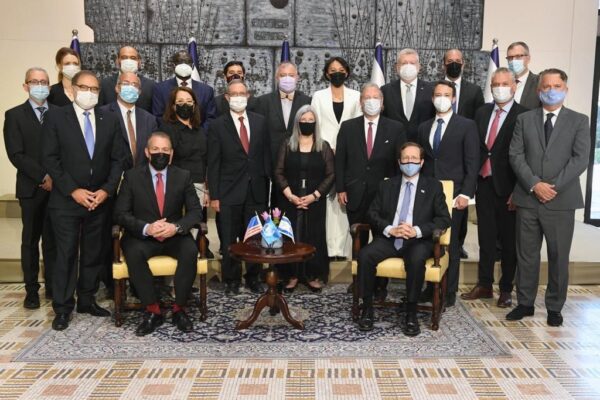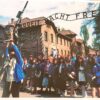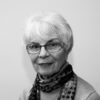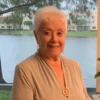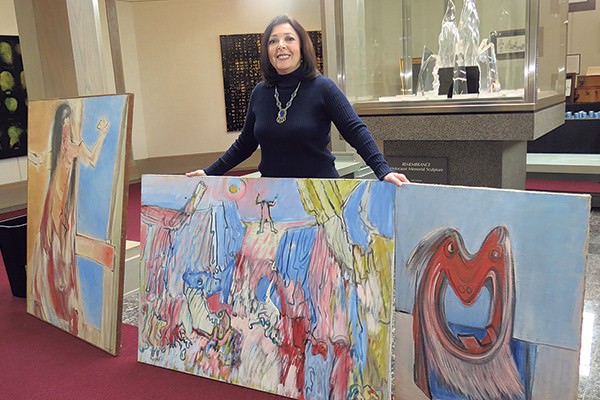
Nine paintings by a Lithuanian survivor of the Shoa are now in the possession of the Jewish Federation of Greater MetroWest NJ, thanks to a gift from the Hofstra University Museum on Long Island.
Barbara Wind, director of the Holocaust Council of Greater MetroWest, arranged for the federation to acquire the paintings of the late Yonia Fain after Hofstra offered them free of charge to Holocaust centers and World War II museums.
Together with Edward DeCrescenzo, the federation’s director of community facilities, she transported the works to its Aidekman Jewish Community Campus in Whippany from Fain’s Brooklyn home.
Although Fain had no direct connections to New Jersey, “we are always looking for artifacts from survivors,” said Wind. “What if Fain has not been associated with a university? After he died, where would his stuff go? It would be dumped. But if we tell his story and show his artwork, he will not be forgotten.”
Fain was born in the village of Kamyanets in southern Russia in 1913. Eleven years later he and his family moved to Vilna, Lithuania, where he obtained a master of fine arts degree from its university in 1937.
In 1939 he fled the Nazis, but a year later, he and his wife Nuta were captured by Soviet troops. After being released, they fled to China and became part of the relocated Jewish community in Shanghai, where he earned his living as a portrait painter.
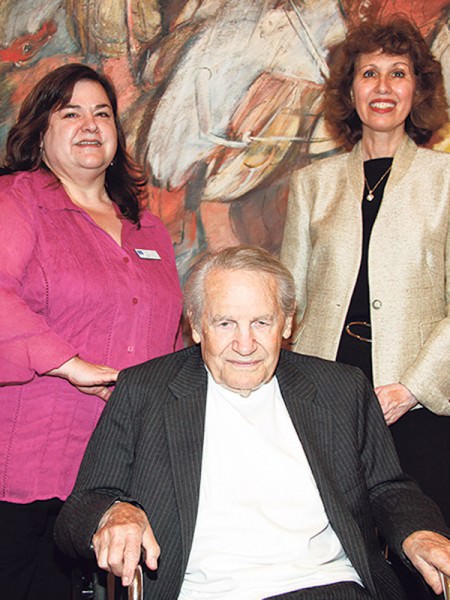 A year after World War II ended he moved again, this time to Mexico City, where he became an art instructor and developed a friendship with famed muralist Diego Rivera. His next stop was New York. He taught at New York University from 1964 to 1970, and then joined the Hofstra faculty in 1971.
A year after World War II ended he moved again, this time to Mexico City, where he became an art instructor and developed a friendship with famed muralist Diego Rivera. His next stop was New York. He taught at New York University from 1964 to 1970, and then joined the Hofstra faculty in 1971.
Fain, a poet as well as a painter, died at the age of 100 in 2013, bequeathing all of his work and a brownstone he owned in Brooklyn to the university.
One of his poems, “Quite Simply,” was published in an anthology called Yiddish Literature in America, 1870-2000 (KTAV Publishing House, 2009). It said, in part, “If my life is no more than a match, I’m thankful for the little flame built into the match.”
“He was very prolific,” said Wind. “I would guess he created thousands of works…. He was not just a Sunday painter. He was a professional. He was an intellectual.”
Wind said her plans call for the artworks, which are being stored in the Wilf Holocaust Memorial on the Aidekman campus, to be displayed in an exhibit on the campus. If that happens, the federation will join such other institutions as the Whitney Museum of American Art in Manhattan, the Palacio de Bellas Artes in Mexico City, the Chrysler Museum of Art in Norfolk, Va., and the Butler Institute of American Art in Youngstown, Ohio, in showing Fain’s art.
In a catalogue that accompanied Fain’s 1948 exhibit in Mexico City, Rivera wrote that “everything experienced by the artist in his days of suffering and flight, which took him more than half-way around the world, is contained in the paintings and drawings.”
By Robert Wienner
Original article published HERE.
